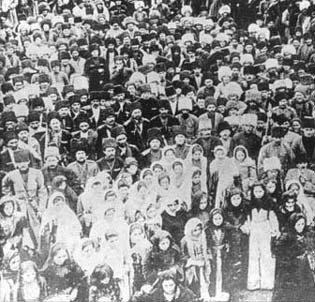In May 1918, while Russia was busy building a new Bolshevik state, Daghestanis and Chechens formed a North Caucasian Republic and declared their independence. Vladimir Lenin’s initial declaration to the Chechens and other non-Russian groups within the Russian Empire to “organize your national life freely and without hindrance” was taken as a sign of support for the North Caucasian Republic.
For the next three years, as civil war raged in Russia, Bolshevik “Red” and anti-Bolshevik “White” forces vied for control of the Caucasus. In 1919, White commander General Anton Denikin invaded Chechnya with the goal of returning it to the Russian fold. Joining forces with the Daghestani imam Sheik Uzun-Haji, the Bolsheviks succeeded in pushing the Whites out of Chechnya in 1920.
After Haji’s death, fighting broke out with the Bolshevik Reds who once had supported the Sheik and now installed a harsh military occupation of their own. A rebellion broke out in eastern Chechnya led by Said Bek, a great-grandson of the legendary leader Imam Shamil. Promised amnesty for the rebellion by Nationalities Commissar Joseph Stalin in return for their support for Lenin’s regime, Chechnya became an autonomous republic within the Soviet Union in 1922. In 1936, Chechnya and neighboring Ingushetia were merged and became the Chechen-Ingush Autonomous Soviet Socialist Republic. But the region’s travails were not over. While literacy rates soared under Soviet rule, Stalin unleashed a brutal cycle of political repression in the region that culminated in the 1937 mass execution of some 14,000 Chechens and Ingush.
Did You Know?
In 1938, as part of its Russification policy, the Kremlin decreed that Chechen must be written using the Cyrillic alphabet. The Chechens had switched over to the Latin alphabet from Arabic in 1925. Under the leadership of separatist leader Jokhar Dudayev, Chechnya returned to the Latin alphabet in 1992.
- Previous: 1817-1964: The Caucasian Wars
- Next: 1944: Deportation




